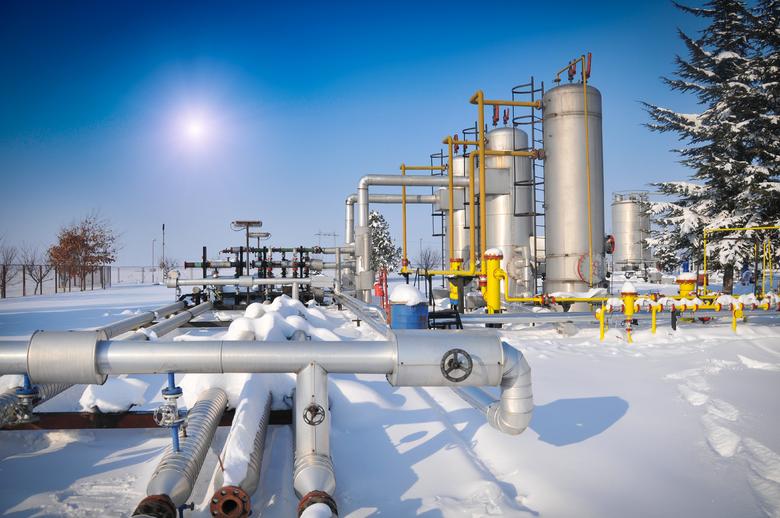
SHALE GAS: EU RECOMENDATIONS

The recent turbulence in Ukraine and Russia's politics have multiple dimensions. Energy security is a major concern, particularly for those European countries which heavily rely on Russian gas supplies. The Ukrainian crisis reminds us how important it is for Europe to secure its energy sources. In fact, the European Commission states that the promotion of energy supply security is one of the goals of its Climate and Energy Policy. Consequently, shale gas will remain an attractive alternative for EU member states to consider in their energy mix.
After a long and heated debate, the European Union has finally decided to take a stand on the environmental standards for exploration and extraction of shale gas in Europe. In January, the European Commission (EC) adopted a recommendation specifying minimum principles for the exploration and production of hydrocarbons (especially shale gas) by means of high volume hydraulic fracturing, commonly known as "fracking." The EC recommends, among other things, that member states undertake measures to ensure that an environmental impact assessment (EIA) is carried out prior to the start of high volume hydraulic fracturing. The recommendation defines high volume hydraulic fracturing as injecting 1,000 cubic meters or more of water per fracturing stage or 10,000 cubic meters or more of water during the entire fracturing process into a well.
The requirement of an EIA for fracking operations constitutes one of the most contested aspects of the shale gas debate in Europe.
Unlike Europe, the United States, which is the world's most advanced country in shale gas exploration and production, does not require that an EIA (in the U.S. referred to as Environmental Impact Statement (EIS)) be conducted before undertaking oil and gas operations, including fracking, with some minor exemptions. Oil and gas operations in the United States are regulated at the state level and none of the states requires operators to undertake EIA's before exploration or extraction of shale gas in the form the EU requires.
Additionally, conditions for shale gas development in Europe are much different than in the United States. Notably, Europe is more densely populated, geological formations make the extraction process more complex, and Europe does not have the necessary infrastructure. The EIA may become another hurdle making investors more hesitant to explore shale gas in Europe.
An EIA is a lengthy and costly procedure. In the European Union, it is regulated by Directive 2011/92/EU on the assessment of the effects of certain public and private projects on the environment (EIA Directive). This directive requires private operators who undertake construction and other major infrastructure installations which affect the natural environment or landscape to carry out an EIA. The list of projects that require an EIA is included in Annex I to the Directive, which includes, for example, crude oil refineries, thermal power stations with a heat output of 300 MW, integrated chemical installations, waste disposal installations, and construction of motorways.
With respect to oil and gas operations, an EIA is required for the extraction of petroleum and natural gas for commercial purposes where the amount extracted exceeds 500 tons per day in the case of petroleum and 500,000 cubic meters per day in the case of gas.
Operators who carry out an EIA must comply with seven main components of the process:
- Description of the project and project site and its key components, such as construction, operation and decommissioning, as well as a description of expected emissions (water, air, noise, etc.).
- Description of considered alternatives.
- Description of the environment that is likely to be significantly affected by the project, such as human populations, fauna, flora, air, soil, water, landscape and cultural heritage.
- Description of the significant impact on the environment. For example, with respect to fracking operations, significant impact includes extensive use of water or noise emissions.
- Mitigation. After describing the significant impact on the environment, an operator must specify how it plans to prevent, reduce and, where possible, offset its effects.
- A lay description of a project that will be understood by the public.
- Lastly, a description of technical deficiencies or lack of know-how. In this part of the EIA procedure operators must identify areas where they have limited knowledge or expertise.
Needless to say, it takes time and research for the operator to obtain such information. Moreover, once the research has been carried out a consultation procedure follows under which authorities likely to be concerned by the project as well as other member states and the public can express their opinions. If the public or authorities reject the EIA, the operator must conduct additional research and re-submit the EIA.
In general, it takes operators on average six months to two years to carry out an EIA, and the costs can reach 1 percent of the whole investment.
Furthermore, it must be noted that the European Parliament has undertaken efforts to amend the EIA Directive and cover fracking operations by the EIA. Currently, member states have discretion whether to make activities subject to an EIA when they fall below the thresholds for petroleum (500 tons per day) and gas (500,000 cubic meters per day). Last fall the European Parliament voted in favor of an amendment that would mandate activities falling below the aforementioned thresholds to be subject to an EIA However, due to the opposition of some member states, including the United Kingdom and Poland, the Council of Ministers rejected this proposal.
Independently, in March the European Parliament passed much awaited changes to the EIA Directive. These amendments contain requirements that will further strengthen the assessment of, among other things, shale gas projects. In particular, developers will not be able to avoid the EIA by submitting small individual projects in adjacent areas that are below the thresholds (so called "salami slicing"). The amended directive now awaits the Council's approval.
As discussed, the EIA poses a significant burden on operators planning to conduct shale gas operations that involve hydraulic fracturing. Considering other factors, such as lack of infrastructure or dense population, the EIA may become another hurdle hampering the development of shale gas in Europe. However, since shale gas may revolutionise the European energy market member states should consider some options that could relieve the EIA burden from operators on one hand and satisfy the strict requirements of the EIA Directive on the other. For example, member states could define areas where shale gas operations can be carried out and local governments could conduct the EIA. This may encourage operators who must already deal with multiple environmental and administrative requirements. Such an approach has been taken by the Netherlands with respect to wind energy at sea projects and aims to ensure that by 2023 there are wind turbine parks with a peak capacity of 4,450 MW.
oilandgaseurasia.com


